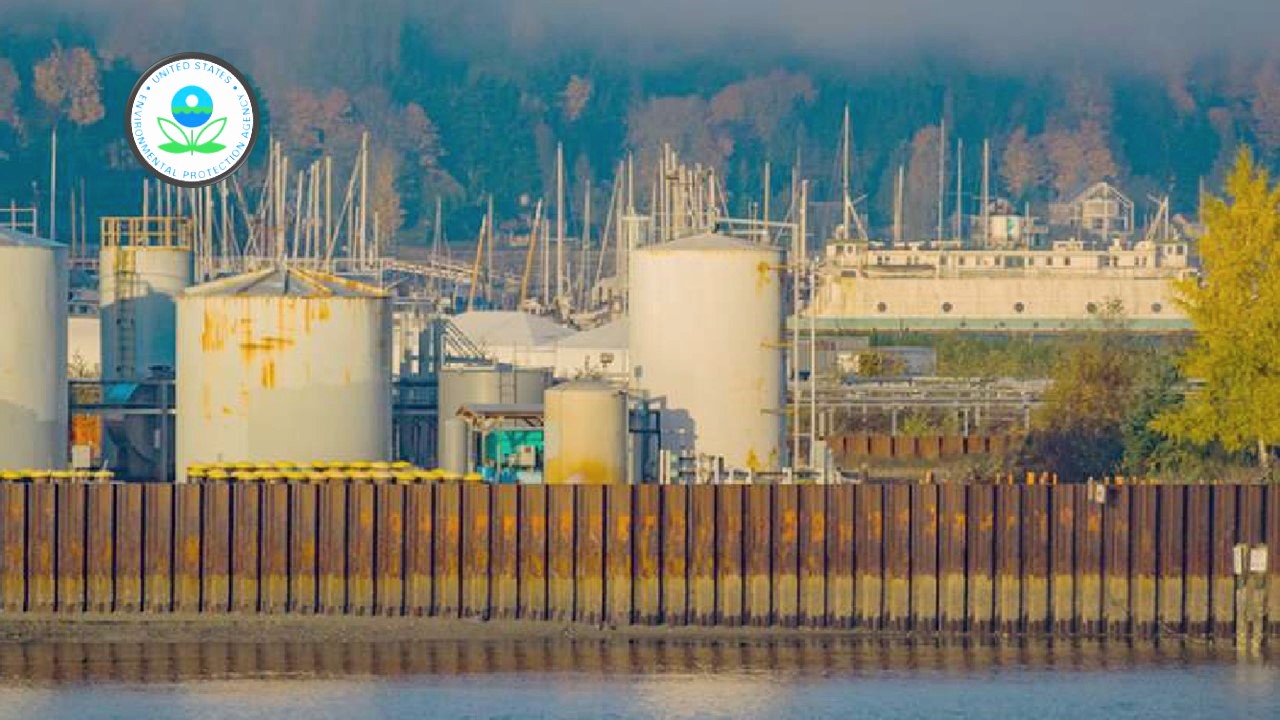Unpacking the EPA’s New Hazardous Substances Rule

Several new laws will impact the industry in 2024. One notable regulatory update that will have sweeping impacts is the Environmental Protection Agency's (“EPA”) Final Rulemaking on Clean Water Act (“CWA”) Hazardous Substances (“HS”) Facility Response Plans (“FRP”).
The new rule brings in a host of new facilities that had previously been exempt from the Oil Pollution Act of 1990 (“OPA90”) rule under EPA’s jurisdiction. It expands OPA90 from a singular focus on oil to covering 296 HSs. (Click here for a link to a comprehensive list.
Under the new rule, companies with reportable quantities of HS on site must develop an FRP after applying the new multiplier of 1,000x. Like every rule, there are exemptions; some are clear, while others are murky. As such, the key takeaway is that if you store, handle, or manage hazardous substances, it is crucial to understand the new rule and assess if it impacts your operations. The resources below will help you do both.
Three aspects of the new rule worth highlighting are the new requirements for Qualified Individuals (“QI”), the new one-hour and two-hour response requirements, and the requirements for contracted resources, which are very different from the Oil FRP rule. These requirements will change how companies plan, train, contract, and manage responses. Most of the other changes in the rule are related to how data is presented within the new FRPs. Exercises are also worth exploring, but the EPA is still developing a revised National Preparedness for Response Exercise Program (“PREP”) for the new rule, so there is nothing to review now.
Witt O’Brien published a short series on LinkedIn comparing those noted above and other crucial elements of this new rule against the EPA’s Oil FRP rule. They address the new QI requirements, one-hour and two-hour changes, additions to disposal plans, the new process for hazard evaluations, types of contracted resources, new coordination requirements, worst-case discharges under the new rule, mixtures and their applicability, and the new petitions and appeals process. The series can be found by clicking here.
The article series highlights two overarching themes:
- The new rule has added many additional planning requirements compared to the EPA’s Oil FRP rule.
- The EPA needs to clarify many questions about how to comply with key elements of the new rule.
Key Questions and Concerns
The second theme prompted Witt O’Brien’s to compile this list of concerns/questions. It is by no means complete, but it reflects areas we are hopeful to see clarified soon so the industry can start working towards developing plans and complying with the new rule.
- As the plan holder determines the equipment required to respond, do Spill Response Organizations (“SRO”) agreements need to list everything or will the United States Coast Guard eventually be the certifying agency as in the Oil FRP Rule? If the latter, will the plan holder only have to show proof of a contract? If not, what level of documentation will be required?
- Will the EPA develop a model for the planning calculations and Worst-Case Discharge (“WCD”) modeling, or does the industry have to develop a model? If it’s on the industry, what level of documentation will be required? Also, if it’s up to the industry, there are many conditions that need to be modeled, so will there be guidance on how to apply these conditions and clear resources (e.g., where to find water standard databases and how to use, tools for different water characteristics, list of capable models with their limitations, tools for surface condition modeling, weather modeling) to use as reference tools? EPA has noted they are working on this, but nothing is being shared publicly regarding the rollout.
- The rule provides container types that are not included in the definition. What is a “process vessel” – is it HS-filled manufacturing equipment?
- At manufacturing/refining locations, does every chemical/mechanical process, from feedstocks, to interim products, to final products, have to be evaluated for coverage of regulated HSs? The rule notes process equipment, which implies that they will.
- Are there exclusions for discharges under National Pollutant Discharge Elimination System permits?
- The rule notes that ignitions and reactions must be considered. Does this mean you have to evaluate all secondary products when something is ignited, as well as all the outcomes if substances mix?
- What is the difference between distance and the definition of planning distance?
- Distance to the endpoint means the greatest distance a CWA hazardous substance in a worst case discharge into or on the navigable waters or a conveyance to navigable waters can travel while still having the ability to cause injury to public receptors or fish, wildlife, and sensitive environments …
- Planning distance means the distance to an endpoint such that a worst-case discharge of CWA hazardous substances into or on the navigable waters or a conveyance to navigable waters from a non-transportation-related onshore facility could adversely impact a public water system or cause injury to fish, wildlife, and sensitive environments or public receptors …
- The rule exempts Publicly Owned Treatment Works; does it also exempt industrial, privately owned systems?
- Will oil be exempted? (The EPA notes that regulating oil is not their intention under this new rule. However, the current rule doesn’t offer an exemption for oil in terms of how it is worded.)
- PREP has yet to be updated to address this new rule. When will it be updated? (EPA is estimating late 2025.)
- Companies are required to work with local emergency planning committees. If these Local Emergency Planning Committees (“LEPC”) have unreasonable requests, will the EPA moderate expectations?
- Are self-inspections for response equipment or regulated containers under this program?
- For the hazard analysis, is there a preferred methodology, as it reads very similar to Process Safety Management (“PSM”), or is it up to the plan holder’s best judgment?
- For firefighting equipment, what proof do you need to demonstrate that the local fire department can respond? If they can’t, and you must contract out, what level of documentation is required?
- The rule requires developing a disposal plan for firefighting runoff and spent chemicals. Can the disposal plans used in Oil FRPs be used here with minor adjustments, or is a more comprehensive document required? If more comprehensive, what does this look like?
- Beyond noting if impacts to communities with environmental justice concerns may apply, what else is the EPA expecting?
- The information on mixture requirements is unclear. Does the mixture have to meet the threshold quantity or is it added to the total aggregate quantity at the site?
- There is an “and” used in the Resource Conservation and Recovery Act (“RCRA”) exemptions language. Does the “and” mean “and/or,” or does it mean “one must be both”? (See rule definitions for further information) Also, if other HS are at the exempted facilities, but not part of the waste, are they to be screened, or is the entire facility exempted?
- The rule contains several extensive planning requirements, and expectations for addressing them in the FRP are not clearly defined. Will guidance be provided, or will these be case-by-case per-plan reviews (which will cause a lot of “shots in the dark”)? For example, climate change, extreme weather, injury to public receptors, the potential for hazards uses an “etc.” in its requirements, etc.
- Gases and solids must be screened; what level of documentation must be documented to support these reviews?
- What does “peak concentration” mean under §118.3?
- What date triggers the 5-year re-submittal – the date the Substantial Harm (“SH”) form is submitted or the date the FRP is submitted for approval for Significant (“S”)+SH facilities?
- What are some examples of configuration changes that trigger resubmittals?
What you can do today
The questions above are only the tip of the iceberg in terms of issues we’ve encountered while deep-diving into the new rule. As such, it isn't easy to move forward with developing plans. In our private conversations with the EPA, they have noted that a lot of these questions are being addressed internally, and they should have guidance in the upcoming 18 months. The rule has three years to be implemented, and while that seems like a long time, with all the planning requirements involved and the number of open questions, the timeline is precariously short.
At the moment, our advice is to take the following steps now and wait until the industry knows more:
- Run a query of your safety data sheets (“SDS”) against the 296 regulated substances.
- Once you identify SDS that have regulated substances, determine the amount of the substance aggregately stored onsite, then do the math to ascertain if the amount stored onsite exceeds the RQ multiplier.
- Then, and only then, review the exceptions and exemptions under §118.8 to see if any of these can be excluded.
- After compiling your final list of what is regulated and not regulated, hold tight until mid-2025 once the EPA provides more understanding and guidance on how to comply with the rule. The EPA is still working on several large sections of the rule, e.g., the planning model, updated PREP, identifying SROs, and other areas that require further guidance. Hopefully, these will be more transparent by mid-2025.
Additional resources
The EPA and Witt O’Brien’s gave these presentations on the new rule at the 2024 Clean Waterways conference a couple of days after it was formally published.
EPA presentation: click here.
Witt O’Brien’s presentation: click here.
About the Author

John K. Carroll III
Witt O'Brien's
Part of the Ambipar Group
jcarroll@wittobriens.com
